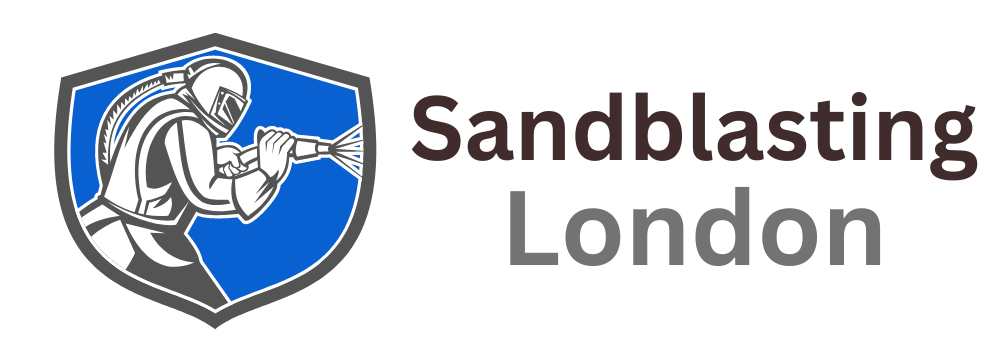How to Do Sandblasting: A Comprehensive Guide
Sandblasting is a powerful technique used to clean and prepare surfaces by propelling abrasive materials at high speed. This process can remove paint, rust, and other contaminants, leaving a smooth, clean surface ideal for painting or coating. In this guide, we'll walk you through the steps involved in sandblasting, from preparation to safety measures, ensuring you have all the information needed to undertake this task efficiently and safely.
Understanding Sandblasting
Sandblasting, also known as abrasive blasting, involves using a high-pressure stream of abrasive material to remove surface contaminants. The abrasive material, often sand, is blasted onto the surface at high speed using compressed air. This technique is widely used in various industries, including automotive, construction, and manufacturing, due to its effectiveness in cleaning and preparing surfaces.
Types of Sandblasting
There are several types of sandblasting techniques, each suited to different applications:
Dry Sandblasting
The most common method is where abrasive material is blasted dry.
Wet Sandblasting
Involves mixing water with the abrasive material to reduce dust and prevent sparks.
Bead Blasting
Uses fine glass beads to create a smooth, matte finish.
Shot Blasting
Utilises steel shots to remove heavy corrosion and scale.
Equipment Needed for Sandblasting
To successfully undertake a sandblasting project, you'll need the following equipment:
1. Air Compressor: Provides the necessary pressure to propel the abrasive material.
2. Blasting Pot: Holds the abrasive material and regulates its flow.
3. Blasting Gun: Directs the abrasive material onto the surface.
4. Abrasive Material: Sand, glass beads, and steel shots are common choices.
5. Protective Gear: Includes respirators, gloves, and protective clothing to ensure safety.
Preparing for Sandblasting
Before starting the abrasive sandblasting process, thorough preparation is crucial:
1. Choose the Right Abrasive Material: Select an abrasive material suitable for the surface you're working on. For instance, glass beads are ideal for delicate surfaces, while steel shots are better for heavy-duty cleaning.
2. Set Up the Equipment: Assemble the air compressor, blasting pot, and gun, ensuring all connections are secure.
3. Safety First: Wear appropriate protective gear, including a respirator, gloves, and eye protection, to guard against dust and debris.
Step-by-Step Sandblasting Process
Follow these steps to ensure effective and safe grit blasting:
1. Surface Inspection: Examine the surface to identify any areas that require special attention or protection.
2. Mask Off Sensitive Areas: Use masking tape and plastic sheets to cover any areas you do not want to blast.
3. Adjust the Pressure: Set the air compressor to the appropriate pressure level for the abrasive material and surface.
4. Begin Blasting: Hold the blasting gun consistently from the surface, usually 6-12 inches, and move it in smooth, even strokes.
5. Monitor Progress: Regularly check the surface to ensure even blasting and avoid over-blasting, which can damage the surface.
6. Clean Up: After blasting, thoroughly clean the area to remove abrasive material and debris.
Safety Considerations
Sand blasting can be hazardous, so following safety guidelines is essential:
1. Respiratory Protection: Always wear a respirator to prevent inhaling dust and abrasive particles.
2. Eye and Skin Protection: Use goggles and gloves to protect your eyes and skin from flying debris.
3. Ventilation: Ensure the workspace is well-ventilated to avoid the buildup of dust and fumes.
4. Proper Training: Only trained individuals should operate sandblasting equipment to minimise the risk of accidents.
Post-Blasting Procedures
Once the sandblasting is complete, there are a few post-blasting procedures to follow:
1. Surface Cleaning: Remove any remaining abrasive material and debris using a brush or vacuum.
2. Surface Inspection: Check the surface for any missed spots or uneven areas and address them if necessary.
3. Coating Application: Apply a primer or coating to the freshly blasted surface to protect it from corrosion and prepare it for painting.
Common Sandblasting Mistakes to Avoid
To ensure a successful sandblasting project, avoid these common mistakes:
1. Using the Wrong Abrasive Material: To prevent damage, choose an abrasive material suited to the surface you're working on.
2. Incorrect Pressure Settings: Adjust the air compressor to the correct pressure level to avoid over-blasting or under-blasting.
3. Inadequate Safety Measures: Always wear protective gear and ensure the workspace is well-ventilated to avoid health hazards.
4. Rushing the Process: Take your time to ensure even blasting and avoid damaging the surface.
Sandblasting is an effective and efficient method for cleaning and preparing surfaces. By following the steps outlined in this guide, you can achieve professional results while ensuring safety and accuracy. Whether you're working on a small DIY project or a large industrial job, understanding the sandblasting process is key to success.
At Sandblasting London, we pride ourselves on providing top-quality sandblasting services tailored to your specific needs. Our experienced team uses state-of-the-art equipment and techniques to deliver exceptional results every time. We prioritise safety, efficiency, and customer satisfaction, making us the ideal choice for all your sandblasting projects. Have a quick online search of "sandblasting near me" on the internet to find us.
Check out our latest GBP update about the sandblasting process from preparing to post blasting.
